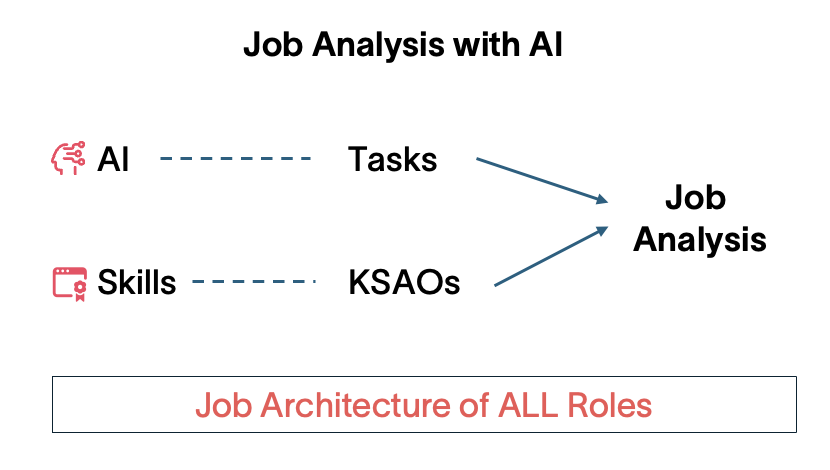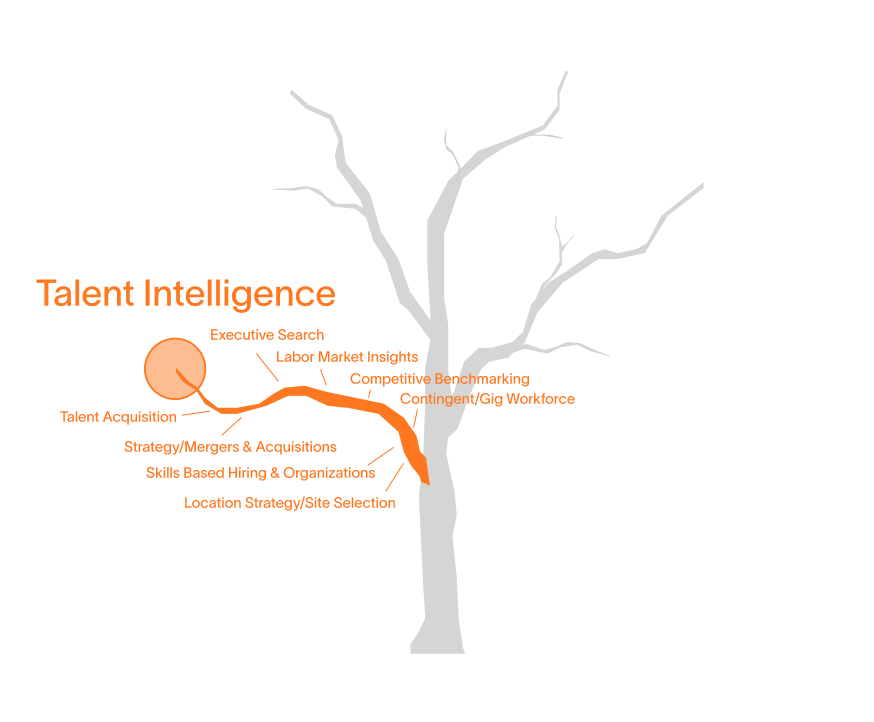
Job Architecture is the Yellow Brick Road
Why Job Analysis at Scale Matters Now More Than Ever
Historically, job analysis has been an unwieldy, costly, and painfully slow process. It’s been reserved for the high-volume, multi-incumbent roles that are easiest to benchmark and justify. It’s been about compliance, compensation, and checking boxes, not about transformation. Job analysis has been trapped in static methodologies that are far too disconnected from the dynamic reality of today’s labor market - especially with AI entering the equation. But the traditional approach to job analysis is changing dramatically, thanks to the confluence of labor economics, psychological science, and the transformational power of generative AI.
In a world where AI is redefining productivity, skills are changing faster than ever (see Lightcast’s Speed of Skill Change report), and job titles are becoming fluid and fuzzy, and we’re not even sure of the definition of a worker anymore, we need a new way to understand work. The traditional model of planning your workforce—roles first, skills second—is not changing quickly enough to accommodate the dynamism of workplace design. The future demands we start with skills, then scale to roles and whole flexible organizational designs. To do that, we need to bring data from three disciplines together:
- •
Labor Economics (granular skills and labor data)
- •
I-O Psychology (task-KSAO frameworks and behavioral science)
- •
Generative AI (contextual synthesis and automation)
Together, they unlock the possibility of job analysis at scale, and not just for the Fortune 50, but for every job in every organization – public and private sector.
At its most boiled-down essence, job analysis is just two things: tasks and KSAOs. What needs to get done, and what a person needs to get it done. But when you try to scale that across an entire enterprise or institution, things break. Why?
- •
It takes too long
- •
It’s not dynamic
- •
It’s expensive
- •
It’s focused on static roles, not evolving skills
- •
It’s siloed by function
- •
It’s not AI-enabled
That’s why we start with skills—the atomic unit of the modern labor market—and use AI to generate and enrich the tasks that surround them. AI can do tasks. Humans have skills. And somewhere in between is the magical orchestration of how work gets done.

Scaling job analysis today means leveraging labor market skills data like Lightcast to thoroughly understand your skills landscape and harnessing AI to decode tasks effectively — more on this to come. This contemporary approach to job analysis at scale transforms the ability to do effective job architecture for ALL roles, moving from a static blueprint into a dynamic, agile system supporting everything from internal mobility and talent intelligence to assessments and people analytics.
Think of job architecture as the framework that connects every aspect of human resources, much like Dorothy’s famous yellow brick road. Follow it correctly, and it will inevitably lead you to the land of robust HR practices (i.e., the land of Oz), regardless of whether you're navigating corporate enterprises, federal government agencies in the throes of digital transformation, or higher education institutions adapting swiftly to AI's impact.

The Tree of Value: Why Job Architecture Is Foundational
In the ever-evolving world of HR and workforce strategy, sometimes we become distracted by the latest trends, tools, and frameworks promising revolutionary insights. It’s easy to get caught up in the noise of new HR trends in an effort to stay current. Yet, despite the ever-changing landscape, four fundamental disciplines have consistently had the potential to deliver value to HR and businesses: people analytics, workforce planning, talent intelligence, and behavioral science. These four concepts makes up the "Tree of Value".
Let’s define the branches of this tree:
- •
People Analytics: The scientific approach of collecting and analyzing internal employee data to understand workforce patterns, predict trends, and inform strategic HR decisions.
- •
Workforce Planning: The strategic process of anticipating an organization's future talent needs by aligning human capital requirements with business objectives and operational goals.
- •
Talent Intelligence: The practice of gathering and interpreting external labor market insights to understand talent availability and demand, location strategy, competitive positioning, and the overall skill landscape across an organization’s industry and talent competitors.
- •
Behavioral Science: The systematic study of human behavior. In a workplace context, this involves providing evidence-based frameworks to understand motivation, decision-making, and organizational dynamics.
The concept of the "Tree of Value" vividly illustrates how job architecture interconnects with broader HR functions. Picture a sturdy tree with deep, healthy roots firmly planted in rich soil. Those roots represent the value of human capital labor data—objective, unbiased information from labor market intelligence providers like Lightcast. These roots nourish the entire tree, ensuring that every part of your HR ecosystem flourishes. Without Lightcast’s labor market intelligence, there is no tree, just disconnected HR initiatives blowing in the wind.
While the four branches form the intellectual framework of the Tree of Value, the real opportunity for the value of human capital labor data lies in the roots of the tree. But it all starts underground—with the data. Each branch thrives due the value of human capital labor data beneath it, from which it draws its strength. Labor market intelligence from Lightcast brings clarity, accuracy, and depth of insights via the tools at our disposal. Information provided by Lightcast's continuously updated Skills Taxonomy (over 33,000 skills) and Occupational Taxonomy (over 1,800 roles). These taxonomies serve as powerful anchors, ensuring your job architecture remains as dynamic and relevant as the ever-evolving world of work.
From those roots grow the trunk: job architecture. This is the foundational structure upon which all HR systems are built. Job architecture allows you to walk the yellow brick road. The stops along the pathway? Compensation strategies. Career paths. Assessments. Upskilling initiatives. AI augmentation. Organizational design. All of them derive value from the core architecture of how jobs are structured and understood.
Walking the Yellow Brick Road: A Three-Step Journey
Consider this practical journey down the yellow brick road, simplified into three powerful steps when using Lightcast:
- •
Normalize Your Titles: Lightcast normalizes internal job titles to align with the standardized language of the broader labor market via its Occupational Taxonomy, bridging internal and external understandings of roles.
- •
Connect Skills: Using Lightcast’s Skills Taxonomy, identify both common and specialized skills associated with these normalized occupations, ensuring comprehensive coverage.
- •
Link to Market Insights: These skills-based occupations are connected to extensive labor market insights, offering strategic intelligence about leading companies, competitive trends, industry trajectories, and critical skill gaps.
This robust three-step framework allows seamless integration of job architecture into vital HR systems, including Human Capital Management (HCM), Applicant Tracking Systems (ATS), Learning Management Systems (LMS), and internal mobility platforms. Leveraging this comprehensive, data-driven approach enables organizations to strategically address talent acquisition, development, and workforce planning through the lens of "build, buy, borrow, and bot."
Want help making your way down the road?
Let us guide youBuild, Buy, Borrow, or Bot
Understanding your job architecture allows you to see your workforce through the lens of the four Bs:
- •
Build: Upskill your current employees
- •
Buy: Recruit externally for key skill gaps
- •
Borrow: Leverage gig or contractor talent
- •
Bot: Automate tasks with AI and robotics
This isn’t theoretical. This is an operational strategy. When your job architecture is grounded in skills and connected to real-time labor market intelligence, you can dynamically model and act on workforce strategies in real time.
But What About Tasks?
Once you have a skills-based job architecture, tasks become a little less critical – at least for common tasks. Tasks represent the actual work that needs to get done—whether by humans, bots, or both. But here’s the catch:
- •
There is no universal task taxonomy
- •
Tasks are highly contextual
- •
Generic tasks don’t capture your competitive advantage
The good news? Generative AI can augment task definition for most common tasks. AI can help you draft, synthesize, and cluster tasks based on role and business need. But it can’t (and shouldn’t) know your secret sauce. That part still belongs to you. Job analysis can be conducted at scale as long as you hold the critical tasks close to the vest. For the rest, use structured sources like O*NET, enriched by Lightcast, and let AI accelerate the work—but don’t abdicate your differentiators.
From Tasks and KSAOs to Ontologies and AI Agents
Keeping job architecture relevant and updated in today’s rapidly changing work environment is essential. As highlighted in Lightcast’s "Speed of Skill Change" report, organizations require dynamic solutions to adapt swiftly. Tools like Lightcast’s Talent Transform, enhanced by the AI-driven Skills Agent, continuously monitor and adapt skill profiles, ensuring your organization’s path stays clear, accurate, and navigable.
This is the number one problem organizations face for job architecture: Keeping the architecture up-to-date with organizational changes. Skills Agent, on top of Talent Transform, makes this easy for you to monitor with its always-on engine for skills intelligence.

The future of job architecture emphasizes a sophisticated skills ontology and robust knowledge graph. Lightcast's AI-powered Skills Ontology illustrates how individual skills interconnect, mature, and evolve—critical insights for navigating complex career pathways and managing workforce transitions effectively. This visualization underscores the interdependent nature of skills, roles, and career development, helping organizations see the long-term impacts of their talent strategies.
Lightcast’s Skills Ontology and Knowledge Graph help model these interdependencies:
- •
How skills build on one another
- •
How career paths unfold
- •
How one small change can ripple across multiple functions
In this world, HR is no longer just an administrative function. It’s a design function—designing the future of work itself.

As the dust settles from AI disruption—and what remains are skills and the work—how those skills connect to roles, tasks, outcomes, and growth are what really matters. Imagine how pulling a single skill thread triggers downstream effects across your workforce. This interconnected approach, visualized through Lightcast’s knowledge graph, helps HR leaders anticipate and proactively manage the ripple effects of workforce decisions, benefiting organizational strategy, employee experience, and overall performance – ultimately, taking you down the yellow brick road of job architecture.
Follow the Yellow Brick Road
Embracing modern job architecture doesn’t require a brain like Scarecrow, a heart like Tin Man, or even courage like the Cowardly Lion. It requires accurate, actionable data. And Lightcast ensures that this journey down the yellow brick road is clear, insightful, and empowering. Whether you’re in private enterprise, federal government, or higher education, the journey is the same: You need to understand your workforce, your skills, and your roles at scale. You need to move from reactive firefighting to proactive design.
That’s what job architecture enables. It’s the yellow brick road of HR.
Lightcast will show you the way.